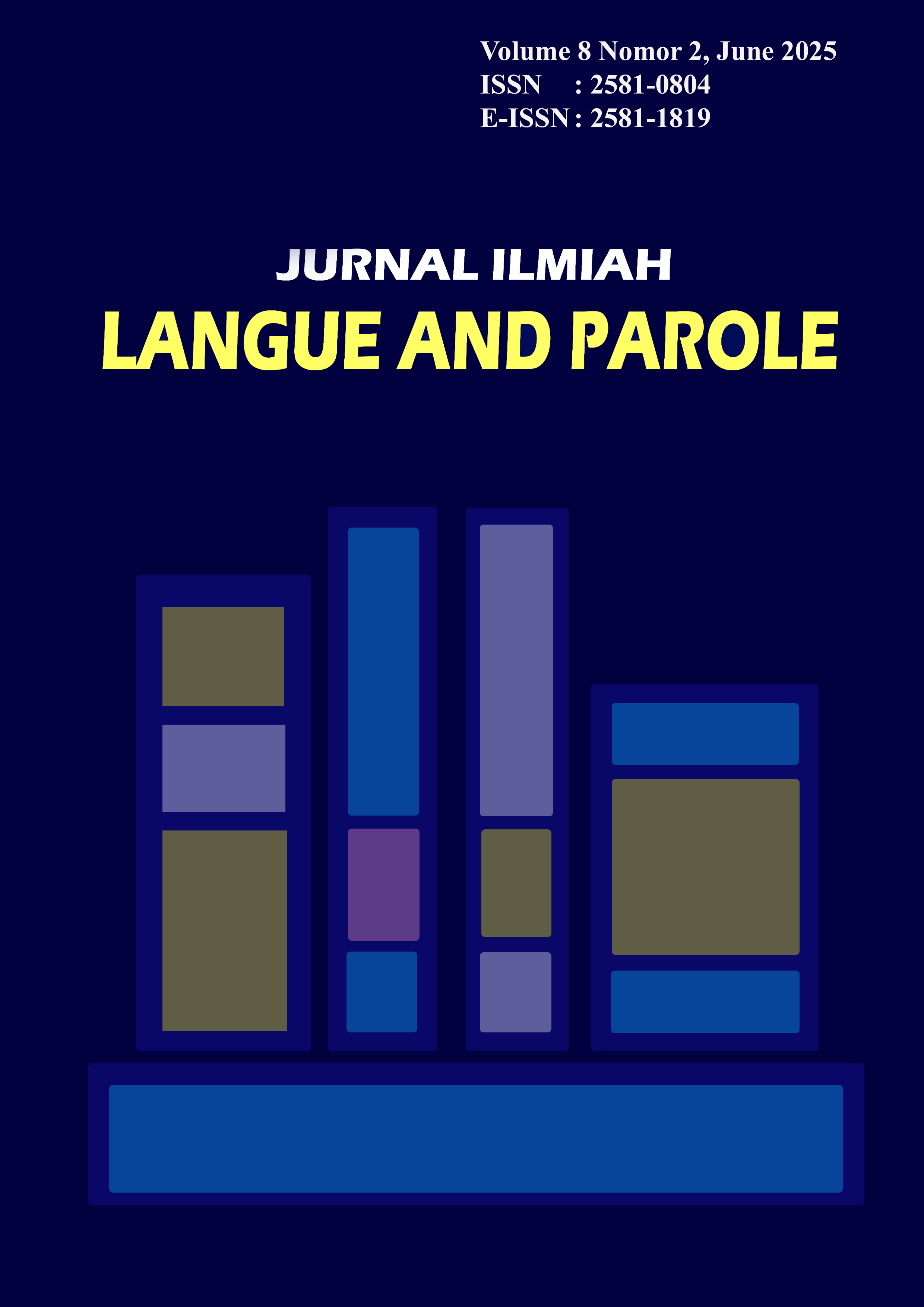Language Change in the Communication of Generation Z
DOI:
https://doi.org/10.36057/jilp.v8i2.734Keywords:
Language Change, Generation Z, Digital Communication, Sociolinguistics, Code-SwitchingAbstract
This study explores the phenomenon of language change in the communication patterns of Generation Z, a demographic cohort born between the mid-1990s and early 2010s, known for their deep integration with digital technology and social media. The research investigates how linguistic shifts—such as the emergence of new slang, abbreviations, code-switching, and emotive expressions—reflect the values, identity, and communication preferences of this generation. Utilizing a qualitative-descriptive approach, the data was collected through observations of online conversations, social media interactions, and informal interviews with Gen Z participants. The findings reveal that language change among Gen Z is significantly influenced by digital platforms such as TikTok, Instagram, and messaging apps, where brevity, creativity, and speed of communication are prioritized. Additionally, the blending of English with native languages, frequent use of memes, emojis, and internet-born expressions are indicative of their unique linguistic landscape. These changes not only reflect evolving communication norms but also challenge traditional views of grammar, vocabulary, and language usage. The study highlights the need for educators and linguists to acknowledge and adapt to these changes in order to remain relevant and effective in language teaching and sociolinguistic analysis.
Downloads
References
[1]Alwasilah, A. C. (2005). Sosiologi bahasa. Bandung: Remaja Rosdakarya.
[2]Baron, N. S. (2008). Always on: Language in an online and mobile world. Oxford University Press.
[3]Crystal, D. (2001). Language and the Internet. Cambridge University Press.
[4]Crystal, D. (2003). The Cambridge encyclopedia of the English language (2nd ed.). Cambridge University Press.
[5]Danesi, M. (2016). The Semiotics of Emoji: The Rise of Visual Language in the Age of the Internet. Bloomsbury Academic.
[6]Dewi, L. S. (2020). Perubahan bahasa pada generasi Z di media sosial: Kajian sosiolinguistik. Jurnal Ilmiah Bahasa dan Sastra, 8(2), 145–153. https://doi.org/10.31294/jbs.v8i2.10345
[7]Eisenlauer, V., & Hoffmann, C. R. (2010). Once upon a blog... Storytelling in weblogs. Language and Computers, 71(1), 79–106. https://doi.org/10.1163/9789401206734_006
[8]Herring, S. C. (2013). Discourse in Web 2.0: Familiar, reconfigured, and emergent. In D. Tannen & A. M. Trester (Eds.), Discourse 2.0: Language and new media (pp. 1–25). Georgetown University Press.
[9]Labov, W. (1994). Principles of Linguistic Change, Volume 1: Internal Factors. Blackwell.
[10]Labov, W. (2001). Principles of Linguistic Change, Volume 2: Social Factors. Blackwell.
[11]McCulloch, G. (2019). Because Internet: Understanding the new rules of language. Riverhead Books.
[12]Sari, M. I. (2022). Perubahan leksikal dalam bahasa generasi Z di platform TikTok. Jurnal Linguistik Terapan, 2(1), 58–70. https://doi.org/10.25077/jlt.2.1.2022.58-70
[13]Tagliamonte, S. A. (2016). Teen talk: The language of adolescents. Cambridge University Press.
[14]Wardhaugh, R., & Fuller, J. M. (2015). An Introduction to Sociolinguistics (7th ed.). Wiley Blackwell.
[15]Yus, F. (2011). Cyberpragmatics: Internet-mediated communication in context. John Benjamins Publishing.
Downloads
Published
How to Cite
Issue
Section
License
Copyright (c) 2025 Jurnal Ilmiah Langue and Parole

This work is licensed under a Creative Commons Attribution-NonCommercial-ShareAlike 4.0 International License.








